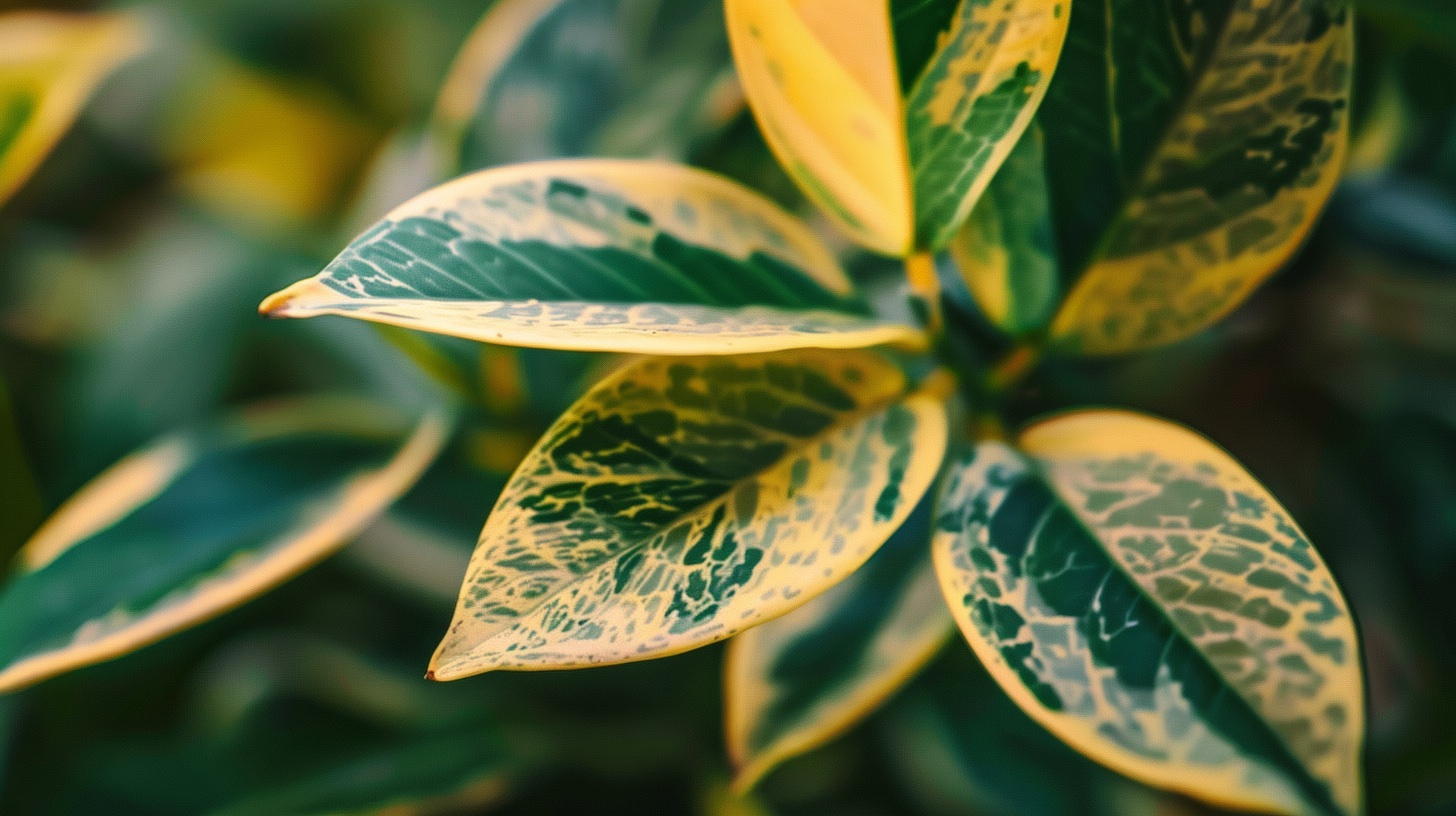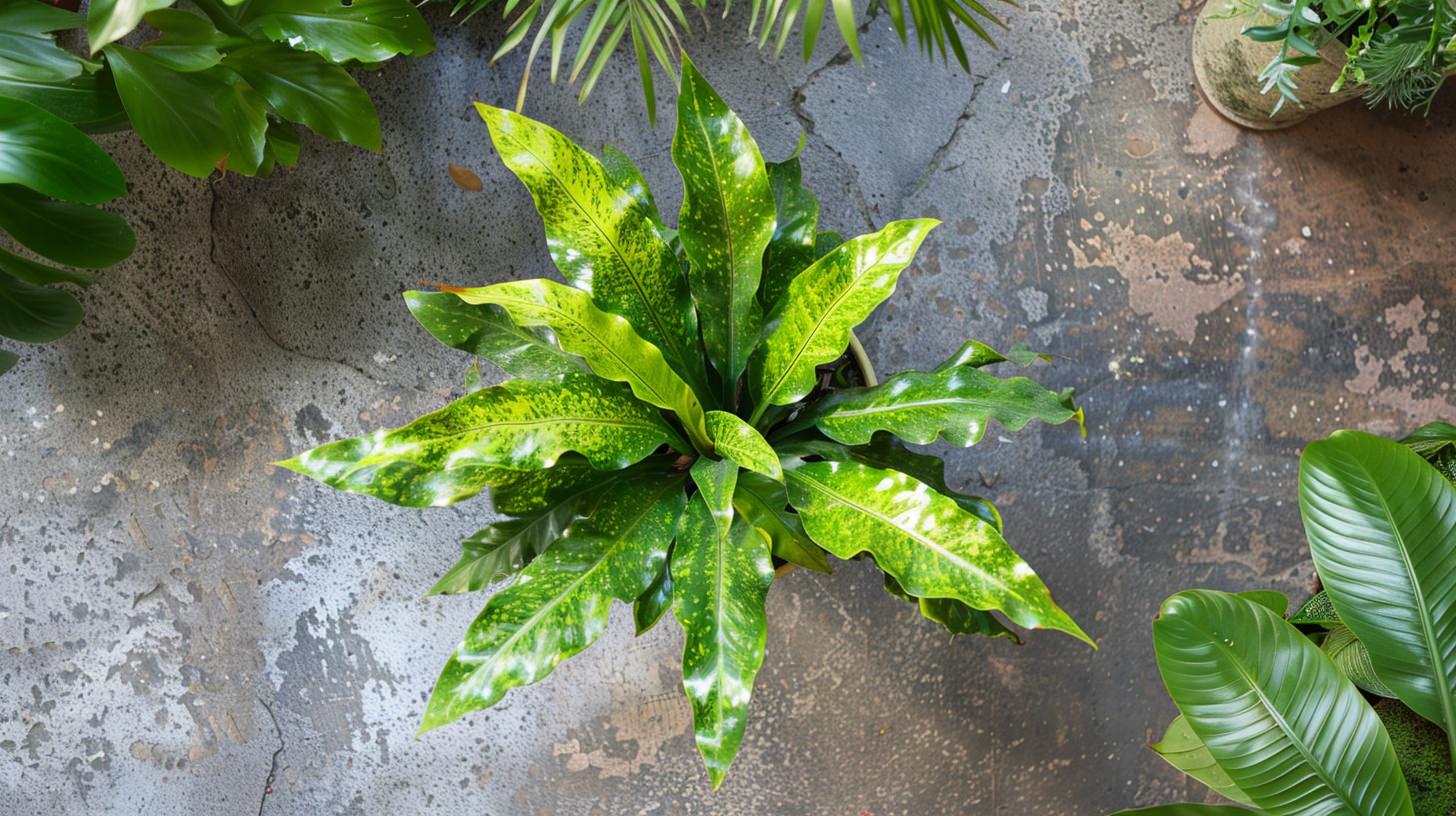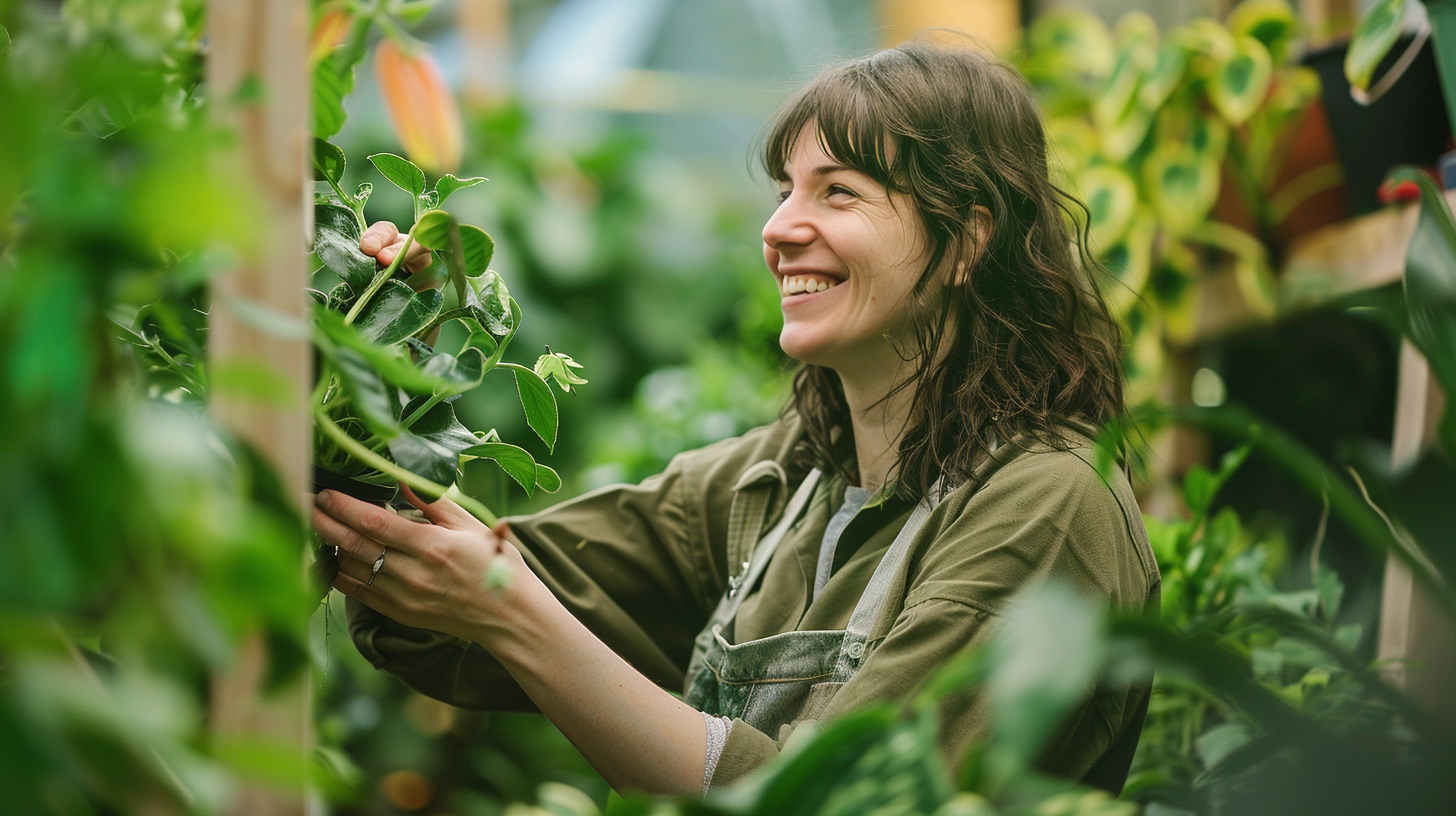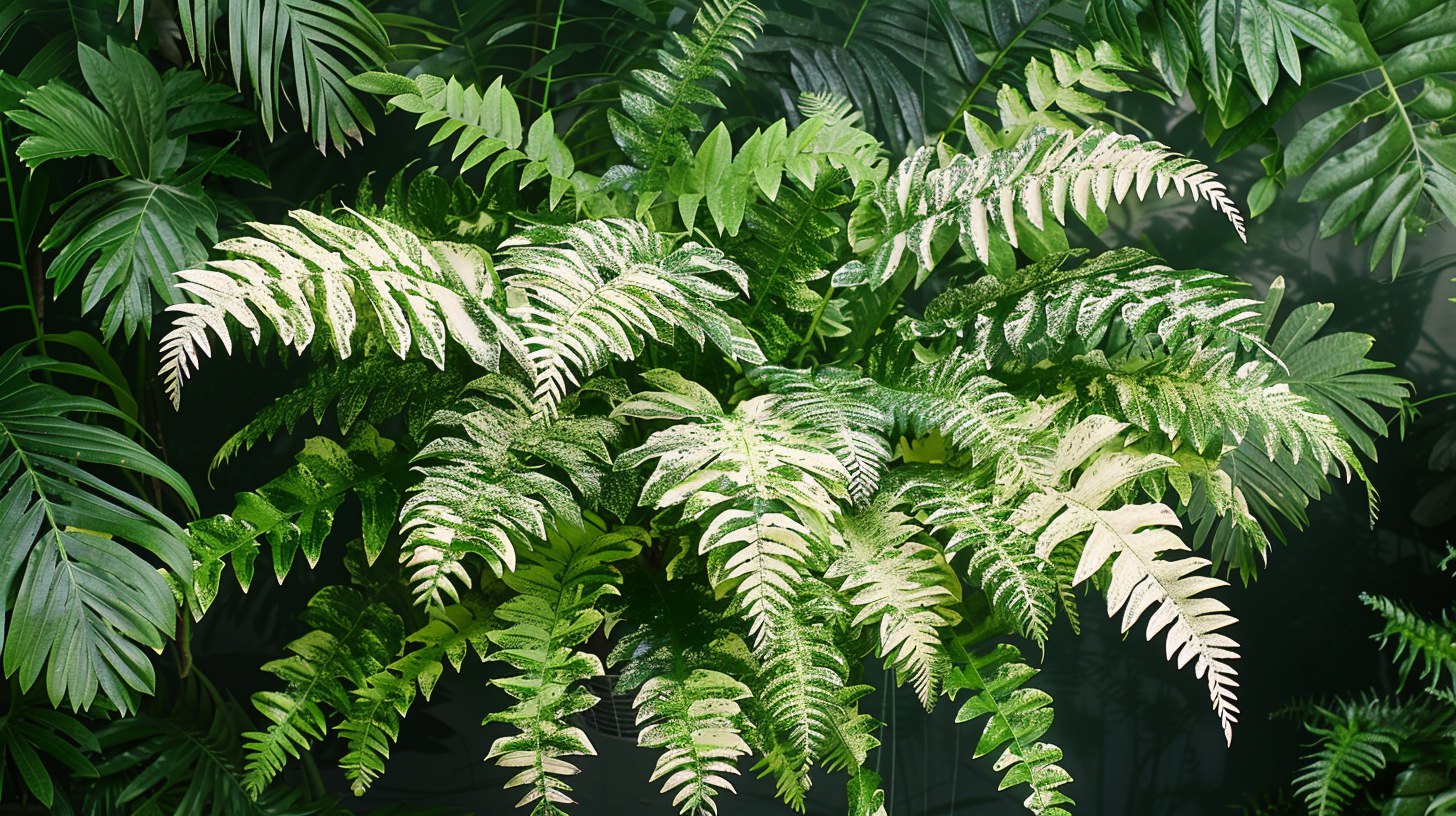
Green spaces enhancement is not just about adding a splash of color; it’s about creating a vibrant and visually captivating environment that breathes life into any space. Imagine walking into a room filled with lush variegated plants, each leaf telling a unique story of nature’s artistry. In this blog post, we delve into the world of variegated plants and explore how they can transform indoor and outdoor green spaces into havens of beauty and tranquility. From design tips to maintenance guides, discover how variegated plants can elevate your surroundings to new heights of botanical bliss.
Benefits of Variegated Plants for Green Spaces Enhancement
Variegated Plants: Definition and Characteristics
Variegated plants are species that exhibit variations in color within their leaves, creating a visually appealing look that can enhance the aesthetics of any green space. These plants often feature splashes of white, cream, yellow, or pink alongside the usual green pigment, providing a unique and striking appearance.
How Variegated Plants Add Color and Texture
The inclusion of variegated plants in green spaces can add depth and dimension to the overall design. Their varied colors and patterns create visual interest, making the landscape more dynamic and engaging. Variegated plants also offer a contrasting element that can complement solid-colored plants, adding a pop of color to the environment.
Variegated Plants for Different Light Conditions
One of the advantages of variegated plants is their versatility in different light conditions. Some variegated species thrive in bright, direct sunlight, while others prefer shaded areas. By carefully selecting variegated plants suited to the specific light conditions of your green space, you can ensure they flourish and contribute effectively to the enhancement of the area.
- Variegated plants offer a wide range of colors, from soft pastels to vibrant hues.
- The unique patterns of variegated leaves can break up monotonous greenery.
- Variegated plants are excellent for creating focal points and drawing attention to specific areas within a garden or landscape.
For more inspiration on incorporating variegated plants in your green spaces, visit The Home Depot’s selection of variegated plants.
Design Tips for Incorporating Variegated Plants
Creating Contrast and Visual Interest
When incorporating variegated plants in green spaces, it’s essential to consider how they can create contrast and add visual interest to the overall design. Pairing variegated plants with solid-colored foliage or flowers can highlight their unique patterns and colors, enhancing the beauty of the landscape. Strategic placement of variegated plants near pathways, borders, or focal points can draw the eye and create a sense of balance in the environment.
Tips:
- Mix variegated plants with solid-colored plants to create striking combinations.
- Use variegated plants as edging or border plants to define different areas within the green space.
- Combine variegated plants with different textures to add depth and dimension to the landscape.
Using Variegated Plants as Focal Points
Variegated plants have the potential to serve as captivating focal points in a green space. Their vibrant colors and patterns can command attention and become the centerpiece of the landscape design. Placing variegated plants in key areas, such as at the center of a garden bed or along a pathway, can create visual impact and draw focus to specific areas within the green space.
Tips:
- Choose variegated plants with bold or unusual patterns to make a statement in the garden.
- Position variegated plants strategically to guide the flow of movement through the space.
- Consider varying heights and shapes of variegated plants to create a dynamic focal point.
Mixing Variegated Plants with Solid Colors
An effective way to enhance green spaces using variegated plants is to mix them with solid-colored plants for a balanced and harmonious design. Pairing variegated foliage with plants that have uniform green leaves or flowers can create a layered and cohesive look. By combining different textures and colors, you can create visually appealing arrangements that elevate the overall aesthetic of the green space.
Tips:
- Create color harmonies by combining variegated plants with solid-colored plants in complementary shades.
- Alternate between variegated and solid plants to create a rhythmic pattern throughout the garden.
- Use variegated plants strategically to break up large areas of greenery and add interest to the landscape.
Maintenance Guide for Variegated Plants
Watering and Soil Requirements
Proper watering and soil conditions are essential for ensuring the health and vitality of variegated plants in green spaces. Variegated plants may have specific watering needs depending on their species and the environment they are grown in. It’s crucial to monitor soil moisture levels regularly and adjust watering frequency accordingly to prevent overwatering or underwatering. Choosing well-draining soil that is rich in nutrients can promote healthy growth and vibrant foliage in variegated plants.
Tips:
- Water variegated plants when the top inch of soil feels dry to the touch.
- Adjust watering frequency based on seasonal changes and plant growth patterns.
- Use a moisture meter to accurately gauge soil moisture levels and prevent waterlogged conditions.
Pruning and Trimming Techniques
Regular pruning and trimming of variegated plants are necessary to maintain their shape, promote new growth, and remove any dead or damaged foliage. It’s important to use sharp, clean pruning tools to prevent the spread of diseases and ensure clean cuts. Trimming back overgrown or leggy branches can encourage bushier growth and enhance the overall appearance of variegated plants in the green space.
Tips:
- Prune variegated plants in the early spring to stimulate growth before the growing season.
- Remove any dead or diseased foliage promptly to prevent the spread of pests and diseases.
- Shape variegated plants to maintain a balanced and aesthetically pleasing form in the landscape.
Dealing with Pests and Diseases
Variegated plants, like any other plant species, are susceptible to pests and diseases that can affect their health and appearance. Monitoring variegated plants regularly for signs of pest infestations, such as yellowing leaves or distorted growth, can help detect and address issues promptly. Implementing natural pest control methods or using targeted treatments can effectively manage common pests and diseases without causing harm to the environment or the plants themselves.
Tips:
- Inspect variegated plants carefully for common pests like aphids, spider mites, and mealybugs.
- Use organic remedies such as neem oil or insecticidal soap to control pest populations.
- Consult with a plant care specialist or local nursery for guidance on treating specific pest and disease problems in variegated plants.
Variegated Plants for Indoor Green Spaces Enhancement
Best Variegated Plants for Indoor Spaces
When it comes to enhancing indoor green spaces with variegated plants, selecting the right species is crucial for achieving the desired aesthetic impact. Some popular variegated plants that thrive indoors include pothos, spider plant, nerve plant, and prayer plant. These plants not only add color and texture to indoor environments but also help purify the air and create a healthier living space.
Tips:
- Choose variegated plants that are well-suited to indoor conditions, such as low light or high humidity.
- Consider the size and growth habits of variegated plants to ensure they fit well in your indoor space.
- Research the care requirements of specific variegated plants to provide them with optimal growing conditions.
Tips for Indoor Plant Care and Placement
Proper care and placement are essential for the successful growth of variegated plants in indoor green spaces. Light exposure, watering routines, and humidity levels play a significant role in the health and vitality of indoor plants. Finding the right balance of these factors and placing variegated plants in suitable locations within your home can maximize their decorative impact and longevity.
Tips:
- Position variegated plants near windows or areas with natural light to ensure they receive adequate sunlight.
- Water indoor variegated plants when the top layer of soil is dry to the touch, avoiding overwatering.
- Use a humidifier or pebble tray to increase humidity levels for variegated plants that require moist air.
Enhancing Indoor Décor with Variegated Plants
Incorporating variegated plants into indoor decor can elevate the aesthetics of living spaces and create a serene and inviting atmosphere. Variegated plants can serve as statement pieces, accentuating furniture arrangements or complementing existing decor themes. By incorporating variegated plants into interior design schemes, you can infuse natural beauty and tranquility into your indoor environment.
Tips:
- Use variegated plants in decorative pots or planters that complement your indoor decor style.
- Create indoor plant displays by grouping variegated plants with different heights and textures.
- Incorporate trailing variegated plants to add height and visual interest to shelves or hanging planters in your living space.
For more inspiration on selecting variegated plants for indoor green spaces, explore The Sill’s collection of indoor variegated plants.
FAQ
Can variegated plants thrive in low-light indoor spaces?
While variegated plants generally prefer bright, indirect sunlight, there are species that can adapt and thrive in low-light conditions. Varieties like snake plants, ZZ plants, and peace lilies are excellent choices for indoor spaces with limited natural light.
How often should I water variegated plants?
The watering frequency for variegated plants varies depending on factors like plant species, pot size, and environmental conditions. It’s recommended to water variegated plants when the top inch of soil feels dry to the touch. Be cautious not to overwater, as this can lead to root rot.
Do variegated plants require special fertilization?
Variegated plants do not necessarily require special fertilization compared to other plants. Using a balanced liquid fertilizer diluted to half-strength during the growing season can help maintain the health and vibrancy of variegated plants.
Are variegated plants more prone to pests and diseases?
Variegated plants are not inherently more susceptible to pests and diseases than other plants. However, it’s essential to monitor variegated plants regularly for signs of common issues like spider mites, aphids, or leaf spot, and take appropriate measures to prevent infestations and diseases.
Can I propagate variegated plants to create more greenery in my space?
Yes, many variegated plants can be propagated through methods such as stem cuttings, division, or leaf cuttings. Propagating variegated plants allows you to expand your plant collection and add more greenery to your indoor or outdoor green spaces.


